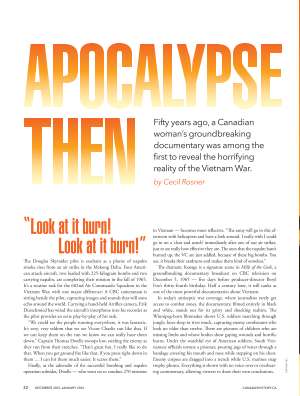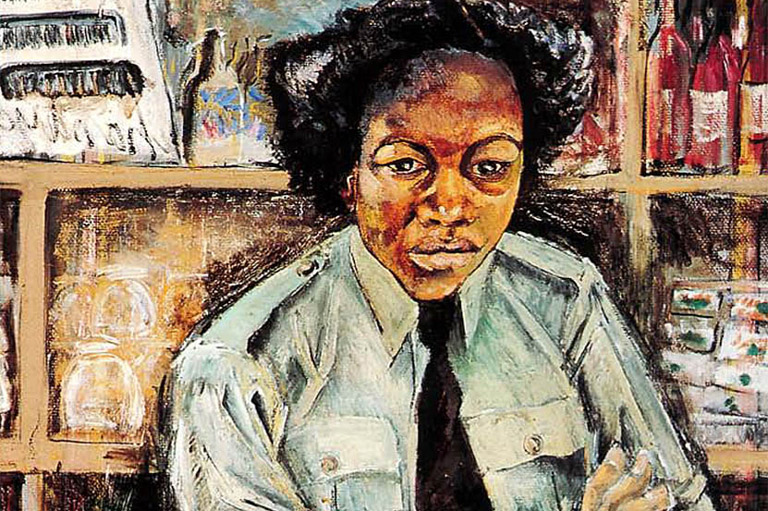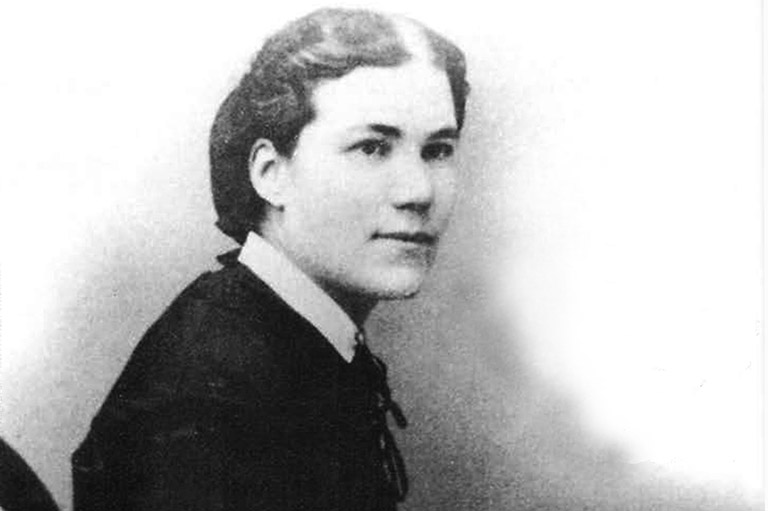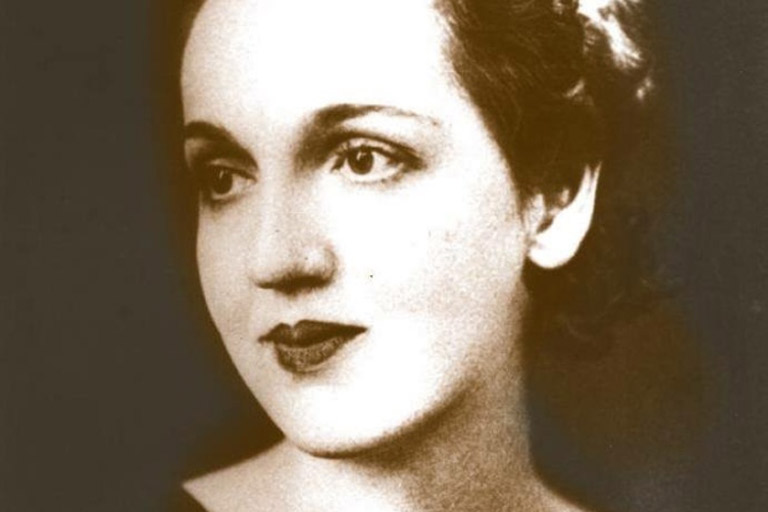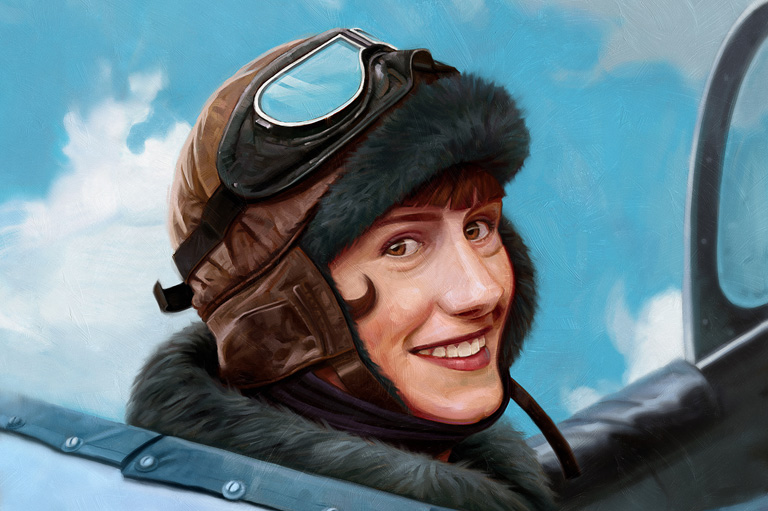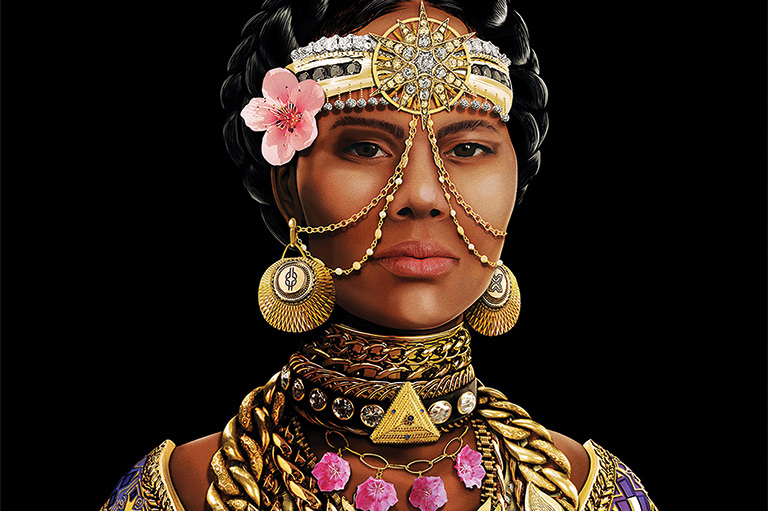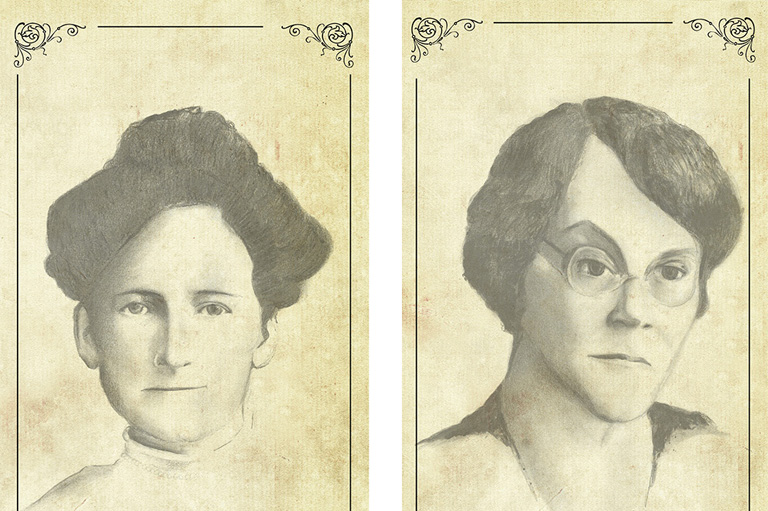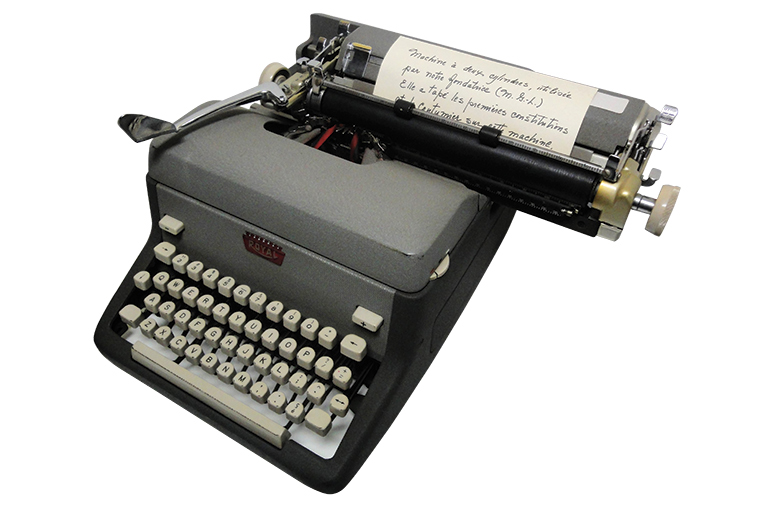Mills of the Gods
On December 5, 1965, CBC television’s This Hour has Seven Days — aired a remarkable documentary. Now, half a century later, Mills of the Gods, produced and directed by Beryl Fox, still ranks as one of the most powerful documentaries about Vietnam.
Advertisement
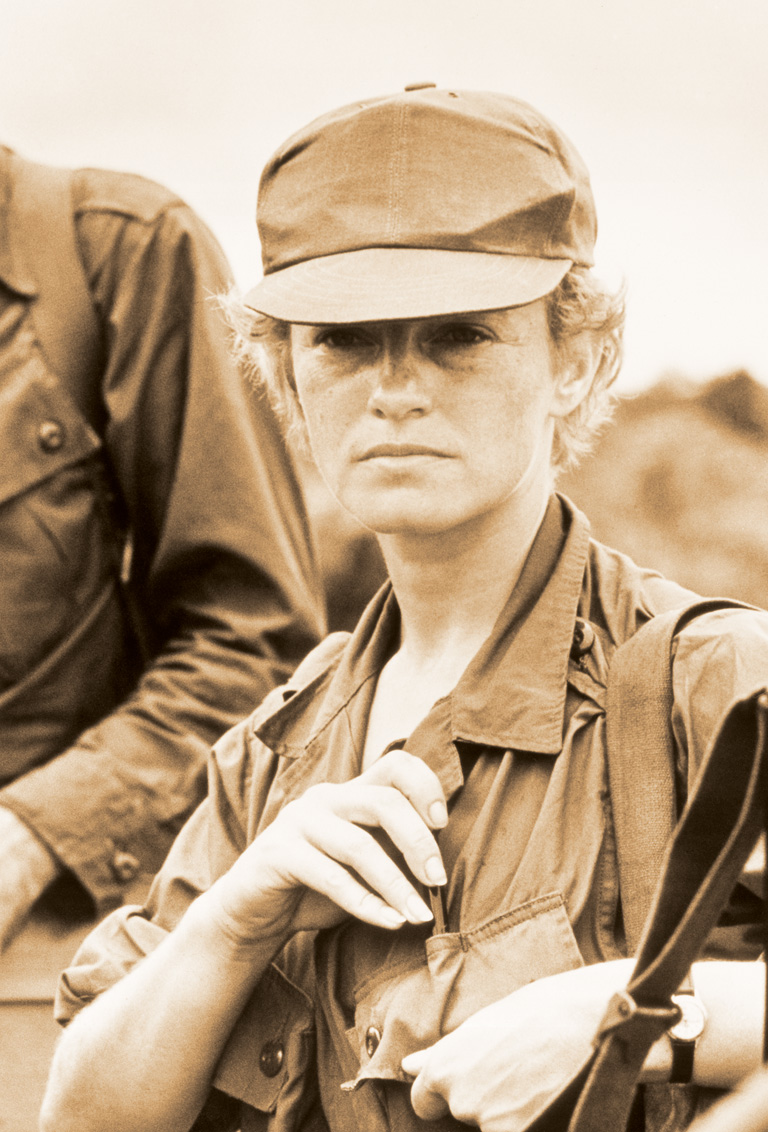
In today’s antiseptic war coverage, where journalists rarely get access to combat zones, the documentary, filmed entirely in black and white, stands out for its gritty and shocking realism. The Winnipeg-born filmmaker shows U.S. soldiers marching through jungle, knee-deep in river muck, capturing enemy combatants who look no older than twelve.
There are pictures of children who are missing limbs and whose bodies show gaping wounds and horrific burns. Everything is shown with no voice-over or overbearing commentary, allowing viewers to draw their own conclusions.
The impact was immediate. Over the next few months, the documentary was shown in Britain and the United States to much critical acclaim. At a time when the anti-war movement was in its infancy, the film opened conversations around the world.
At the time, the idea that a young woman could trek off to Vietnam and bring home an unprecedented slice of reality was something many critics couldn’t quite grasp. Years later, Fox joked that she had been warned by the Pentagon that, if she ever returned to a battle zone under their control, she could get accidentally shot by friendly fire.
With 7 uniquely curated newsletters to choose from, we have something for everyone.
If you believe that stories of women’s history should be more widely known, help us do more.
Your donation of $10, $25, or whatever amount you like, will allow Canada’s History to share women’s stories with readers of all ages, ensuring the widest possible audience can access these stories for free.
Any amount helps, or better yet, start a monthly donation today. Your support makes all the difference. Thank you!
Themes associated with this article
Advertisement

